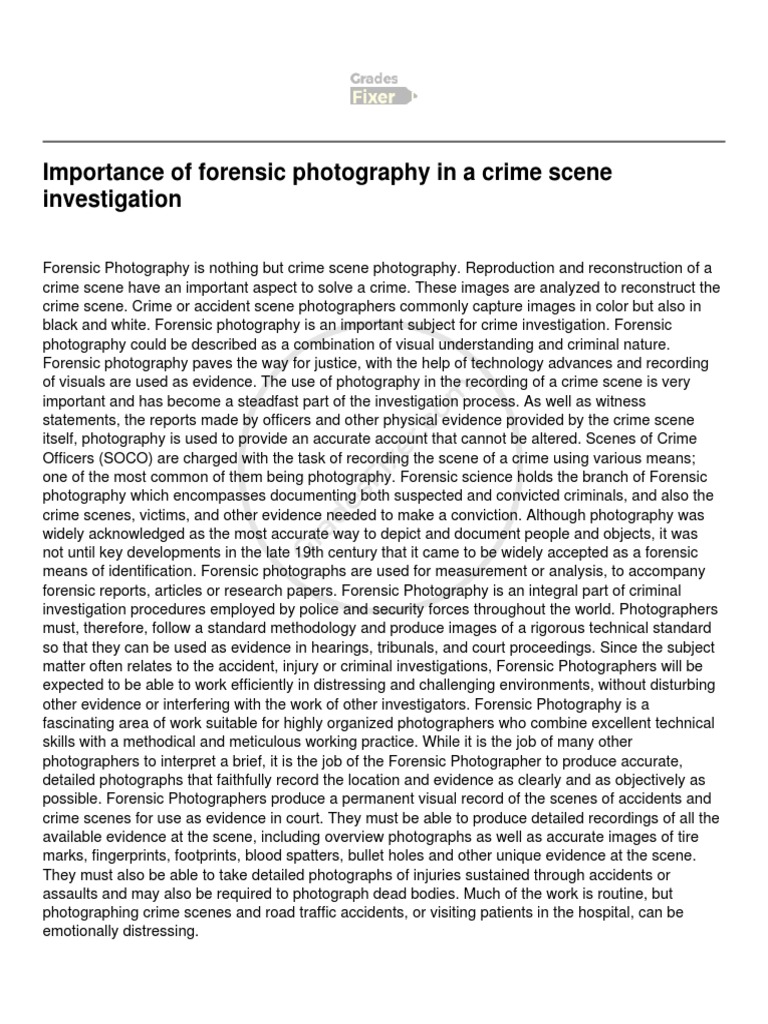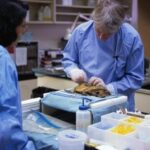The meticulous examination of a crime scene is a cornerstone of forensic science, a process designed to uncover, document, and interpret physical evidence that can shed light on the circumstances surrounding a criminal event. This process, far from being a simple observation, is a structured, multi-faceted undertaking involving various specialists and sophisticated techniques.
I. Securing and Isolating the Scene: The First Line of Defense
The initial step, often performed by first responders, involves establishing a perimeter around the crime scene. This crucial action serves to prevent contamination and preserve the integrity of any potential evidence. The size of the perimeter will depend on the nature of the crime and the extent of the area involved. Controlling access is paramount; only authorized personnel, such as forensic investigators and law enforcement officers, are permitted entry. A detailed log is maintained, recording the names and times of entry/exit for all individuals. This meticulous approach minimizes the risk of inadvertently introducing foreign material or disturbing the spatial relationships of critical items. The concept of “Locard’s Exchange Principle” is ever-present; the principle posits that every contact leaves a trace. Therefore, minimizing contact is vital to preserving the scene’s evidential value.
II. Systematic Documentation: Painting a Visual and Descriptive Portrait
Once the scene is secured, a comprehensive documentation process begins. This includes a combination of photography, videography, sketching, and note-taking. High-resolution photographs are taken from multiple angles, both overall views and close-ups of specific items of interest. Photographic scales are utilized to provide accurate measurements in the images. Videography offers a dynamic perspective, capturing the spatial relationships and context of the scene. Crime scene sketches, both rough and scaled, provide a visual representation of the layout and the positions of key pieces of evidence. Notes are meticulously recorded, detailing observations, measurements, and any other pertinent information. This multi-pronged documentation approach ensures a thorough and lasting record of the crime scene, allowing investigators to revisit the scene virtually long after the physical examination has concluded.
III. The Evidence Search: Uncovering the Silent Witnesses
The search for evidence is a systematic and methodical process. Forensic investigators employ various search patterns, such as grid searches, spiral searches, and zone searches, depending on the size and complexity of the scene. These patterns ensure that no area is overlooked. Evidence can take many forms, including biological material (blood, saliva, hair), trace evidence (fibers, paint chips, glass fragments), fingerprints, footwear impressions, tool marks, and digital evidence (computers, mobile phones). Each piece of evidence is carefully documented in situ, photographed, and then collected using appropriate techniques to prevent contamination or degradation. Chain of custody protocols are rigorously followed, ensuring that the evidence is tracked from the moment it is collected until it is presented in court. This chain of custody documentation verifies the integrity and authenticity of the evidence.
IV. Evidence Collection and Preservation: Safeguarding the Clues
Proper collection and preservation are crucial to maintaining the integrity of evidence. Different types of evidence require different handling techniques. Biological evidence is typically collected using sterile swabs or other specialized tools and stored in appropriate containers to prevent degradation. Trace evidence is often collected using vacuum sweepings, tape lifts, or by carefully removing the item bearing the trace evidence. Fingerprints are lifted using powders or chemical techniques and transferred to fingerprint cards. Each item of evidence is carefully packaged and labeled, including details such as the date, time, location of collection, and the initials of the collecting officer. Maintaining a controlled environment during storage is essential to prevent deterioration. For example, biological evidence may require refrigeration or freezing.
V. Forensic Laboratory Analysis: Unlocking the Secrets Within
Once collected, the evidence is transported to a forensic laboratory for analysis. Here, specialized forensic scientists employ a range of analytical techniques to extract information from the evidence. DNA analysis can identify individuals and link them to the crime scene. Microscopic examination can identify and compare trace evidence such as fibers and paint chips. Ballistics analysis can match bullets to firearms. Toxicology analysis can detect the presence of drugs or poisons in biological samples. Digital forensics specialists can recover data from electronic devices. The results of these analyses are documented in detailed reports, which are then used to reconstruct the events of the crime and identify potential suspects. These reports often contain statistical probabilities and interpretations, providing a scientific basis for the findings.
VI. Reconstruction and Interpretation: Piecing Together the Puzzle
The final stage involves reconstructing the crime scene based on the totality of the evidence. This requires a thorough understanding of forensic science principles, as well as the specific circumstances of the case. Crime scene reconstruction specialists analyze the physical evidence, witness statements, and other information to develop a plausible sequence of events. This may involve creating diagrams, 3D models, or even animations to illustrate the reconstruction. The interpretation of the evidence is critical; the investigator must consider all possible explanations and avoid biases. The reconstruction process is iterative, meaning that it may be refined as new information becomes available. The ultimate goal is to provide a clear and accurate picture of what happened at the crime scene, assisting in the pursuit of justice.
In conclusion, the forensic examination of a crime scene is a complex and demanding process that requires a high level of skill, attention to detail, and scientific knowledge. The careful application of these principles ensures that the evidence is properly collected, analyzed, and interpreted, contributing to a more accurate and just outcome.










Leave a Comment